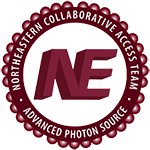Unusual zinc-binding mode of HDAC6-selective hydroxamate inhibitors.
Publication Type:
Journal ArticleSource:
Proc Natl Acad Sci U S A (2017)Abstract:
<p>Histone deacetylases (HDACs) regulate myriad cellular processes by catalyzing the hydrolysis of acetyl-l-lysine residues in histone and nonhistone proteins. The Zn2+-dependent class IIb enzyme HDAC6 regulates microtubule function by deacetylating α-tubulin, which suppresses microtubule dynamics and leads to cell cycle arrest and apoptosis. Accordingly, HDAC6 is a target for the development of selective inhibitors that might be useful in new therapeutic approaches for the treatment of cancer, neurodegenerative diseases, and other disorders. Here, we present high-resolution structures of catalytic domain 2 from Danio rerio HDAC6 (henceforth simply "HDAC6") complexed with compounds that selectively inhibit HDAC6 while maintaining nanomolar inhibitory potency: N-hydroxy-4-[(N(2-hydroxyethyl)-2-phenylacetamido)methyl)-benzamide)] (HPB), ACY-1215 (Ricolinostat), and ACY-1083. These structures reveal that an unusual monodentate Zn2+ coordination mode is exploited by sterically bulky HDAC6-selective phenylhydroxamate inhibitors. We additionally report the ultrahigh-resolution structure of the HDAC6-trichostatin A complex, which reveals two Zn2+-binding conformers for the inhibitor: a major conformer (70%) with canonical bidentate hydroxamate-Zn2+ coordination geometry and a minor conformer (30%) with monodentate hydroxamate-Zn2+ coordination geometry, reflecting a free energy difference of only 0.5 kcal/mol. The minor conformer is not visible in lower resolution structure determinations. Structural comparisons of HDAC6-inhibitor complexes with class I HDACs suggest active site features that contribute to the isozyme selectivity observed in biochemical assays.</p>
